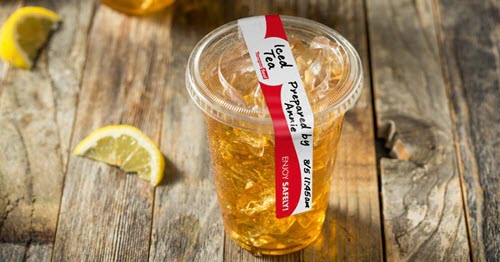Demand for Prepared Foods Drives Packaging Innovation
Posted on 12th Aug 2021
 As supermarkets expand grab-and-go and delivery offerings, they seek to protect patrons’ health and safety.
As supermarkets expand grab-and-go and delivery offerings, they seek to protect patrons’ health and safety.
Prepared foods have been one of the fastest-growing areas in the supermarket channel since well before the COVID-19 pandemic, and food retailers continue to see these offerings as important drivers of sales and profits.
As consumers’ shopping patterns shifted last year to include fewer trips to the store, larger baskets and more online ordering, retailers have adapted their prepared foods accordingly. In many cases, this includes more grab-and-go prepared foods, as well as the increased promotion of prepared offerings in online channels for delivery or pickup—all of which call for an increased focus on food safety and product integrity.
The 2021 Supermarket News Fresh Food Trends Report finds that to fight the competition for prepared foods sales, retailers are turning to grab-and-go (65%), promotions and specials (46%) and home delivery/click-and-collect (37%). In addition, 28% of supermarket operators say they are expanding their space allotted to prepared foods, and 27% are adding more contactless options or other safety measures.
Partnering for delivery
Among the supermarket chains expanding their off-premises prepared foods capabilities is Schnuck Markets. The St. Louis-based chain has partnered with restaurant delivery specialist DoorDash to provide prepared items from the deli department, such as rotisserie chickens, sandwiches, chicken wings, pulled pork, side dishes and side salads. Lakeland, Florida-based Publix Super Markets, meanwhile, is teaming up with grocery delivery giant Instacart to make its prepared foods available for delivery, after launching a pilot with the company’s Instacart Meals service before the pandemic began.
Other supermarkets have opened full-scale restaurants or even ghost kitchens inside their stores, often specializing in providing fully prepared family meals for off-premises consumption.
In executing their prepared-foods initiatives, retailers can take cues from the restaurant industry, which has trusted its ongoing viability to the success of its off-premises offerings for more than a year now. Restaurants have had to rethink several areas of their operations, including menu and packaging, to protect the health and safety of their guests and ensure that products maintain their integrity in transit. Products were reformulated or eliminated, and packaging innovations such as tamper-evident seals became ubiquitous.
For foodservice operators, the expansion of off-premises meal solutions such as grab-and-go displays or digital ordering for pickup or delivery have gone hand-in-hand with increased health and safety precautions.
Noncommercial foodservice operator Elior North America, for example, rolled out the Safe Café program, which focused on incorporating rigorous health and safety standards into its pickup and delivery offerings as well its new 24/7 self-serve marketplaces. It communicated its emphasis on health and safety with its customers through such media as signage, floor decals and packaging seals.
Packaging is key
In fact, packaging has become a key consideration as prepared-foods providers continue to refine their takeout, delivery and grab-and-go offerings.
“If we were to look at this year’s list of buzzwords, you can bet that it would include ‘safety’ and ‘sanitary,’” the Foodservice Packaging Institute concludes in its 2020 Trends Report.
Consumer demand for “contactless” foodservice experiences accelerated the innovations in foodservice packaging, the report notes.
“As restaurants looked to reduce exposure, there was an increase in packaging products that create a barrier between individuals and food, particularly ‘tamper-resistant’ and ‘tamper-evident’ packaging,” the FPI says in the report. “As food is transported in new and different ways, whether through contactless pick-up or third-party delivery, continued packaging innovation ensures the experience is as touch-free as possible.”
In California, tamper-evident food packaging became required by law last year for third-party delivery orders, following reports of food that may have been contaminated during delivery—possibly by hungry or thirsty drivers.
Tamper-evident solutions
DayMark’s TamperSeal labels solve this issue for foodservice providers, in both the retail and restaurant channels. TamperSeal labels feature an aggressive adhesive that sticks to most packaging materials safely and securely. Each label has security slits that cause the labels to lose their integrity if someone attempts to open the container, providing clear evidence that food may have been tampered with.
“This visual indication delivers peace of mind to delivery customers who are reassured that the food they’ve ordered from their favorite foodservice establishment is safe to eat,” says Debbie Leifer, category manager of food safety tech at DayMark.
In addition, TamperSeal allows retail foodservice operators to customize the labels with their own branding and to select from an assortment of shapes and sizes to suit all types of food and beverage packaging. When used with the Matt85 or Matt77 label printer via the MenuPilot app, content such as date codes, a company logo and other types of customized information can be printed on the label.
For more information about how TamperSeal labels can help secure your off-premises prepared-foods solutions, visit DayMark Safety Systems.
Article originally appeared on the Supermarket News website.


